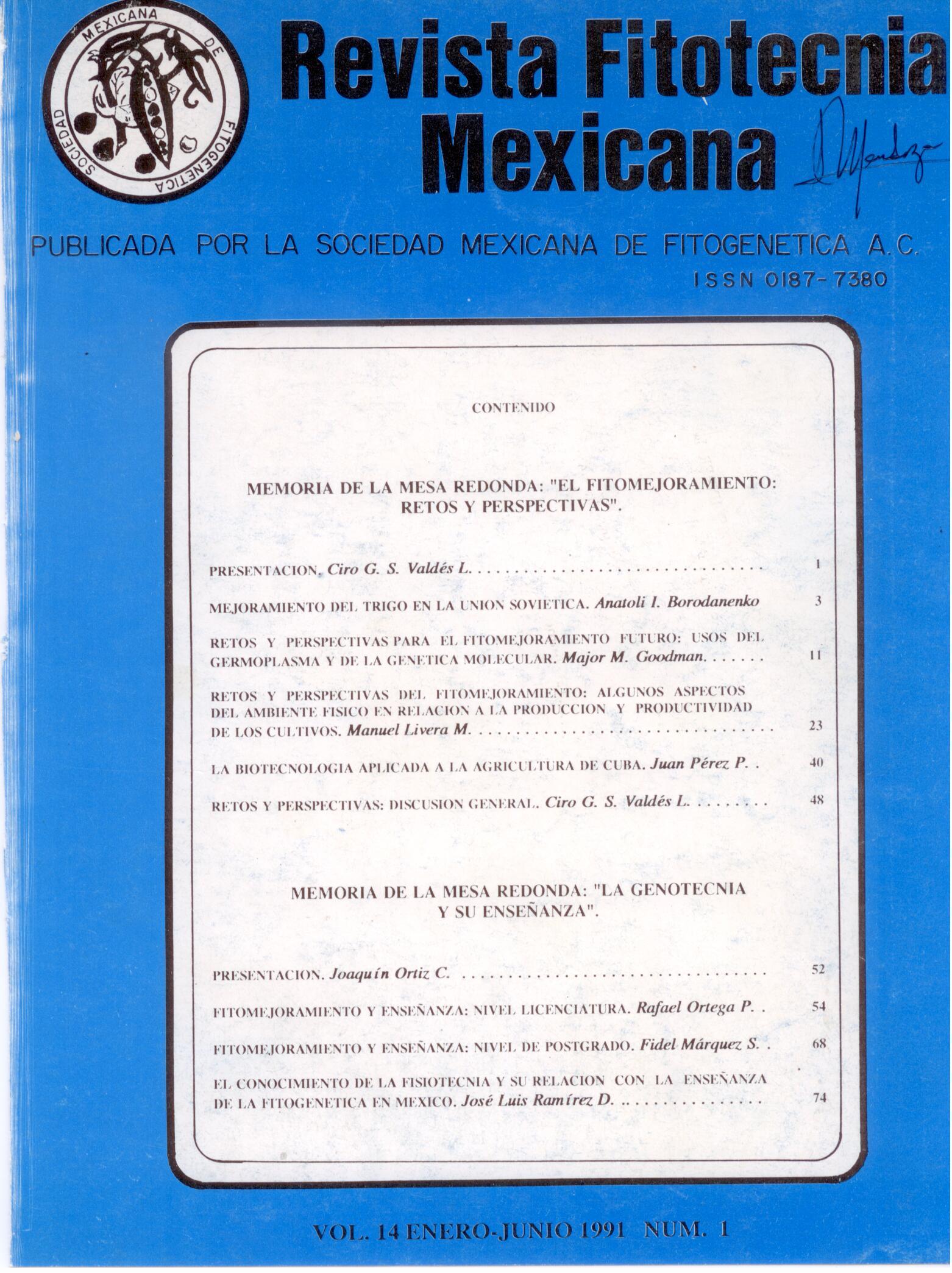CHALLENGES AND PROSPECTS. OF PLANT BREEDING: SOME ASPECTS OF THE PHYSICAL ENVIRONMENT IN RELATIONSHIP TO PRODUCTION AND PRODUCTIVITY OF CROPS
Main Article Content
Abstract
The factors of the physical environment, while supporting crop growth, can also cause stress, an aberrant change in physiological processes caused by one factor or by the combination of several of them (Hale and Orcutt, 1987). The
Crops in the field are always under some level of stress, since a stress-free condition is only a theoretical concept. In
Regarding the factors of the aerial physical environment, its influence on crops has been observed by man since the beginning of agriculture, but the quantitative study of its effects is recent. The interest of farmers and agronomists in meteorological factors is evident by frequent references to "bad weather" for crops, and politicians almost always blame these for failures in agricultural production. On the other hand, the plant breeder also has great interest in these environmental factors because he knows that the growth, development and production of the crop depends on the genotype, the effect of the environment and the interaction between the two; However, his concept of environment is comprehensive and, therefore, it is sometimes not easy for him to define the degree to which factors in the physical environment are limiting the expression of the productive potential of the genotype. Furthermore, considering that the effects of all environmental factors are integrated in the phenotypic expression, the same plants are frequently used to characterize the environments and study the genotype x environment interaction (e.g. Finlay and Wilkinson, 1963; Eberhart and Russell, 1966). Physiologists are also interested in the effects of meteorological factors on the physiological processes and productivity of plants, and there is a large amount of published literature on the subject. In contrast to plant breeders who carry out their work in the field, many physiological studies have been carried out in growth chambers with a controlled environment, varying only one factor; However, the growth chamber results, which are undoubtedly and will continue to be useful, cannot be extrapolated to field conditions, which is why it is recognized that there is an information gap regarding physiology at the crop level. In this regard, Hesketh et al. (1982) point out that the physiology of complete plants under field conditions is so complex that it could cause a "shock" to physiologists specializing in studies in controlled environments. In the field, the growth, development and production of crops depend on physiological processes whose expression in turn depends on the genotype and complex interactions between the state of the plants, the state of the surrounding atmosphere, and the nature of the mechanisms themselves. or physiological and physical processes. These complex interactions determine the levels of mass and energy exchange between the crop and its microclimate and, therefore, interest in the factors of the aerial physical environment should not be limited to its measurement for the characterization of the conditions prevailing at a time or time frame.
The objective of this contribution is to point out the importance of micrometeorology to: 1) Improve the understanding of the effect
of the factors of the physical environment on crops, and 2) Point out some alternatives that can help increase the efficiency of the production process of plants and their genetic improvement. For reasons of space, the discussion will only focus on the concept of energy balance.

